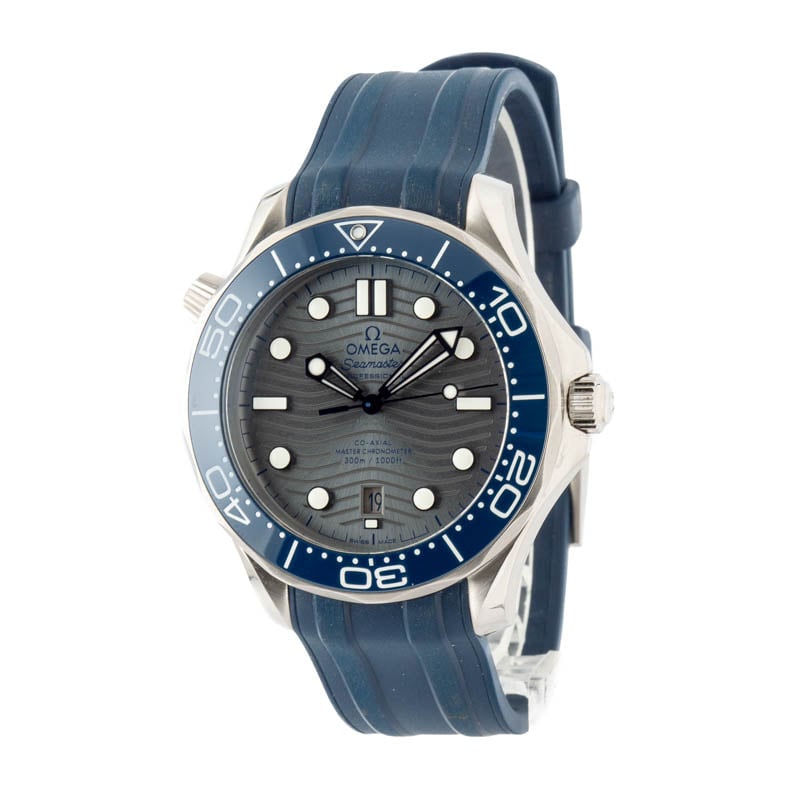The Historical past of the Rolex Daytona, The Emblematic Racing Chronograph
Rolex arguably has extra iconic fashions than any main watchmaker, from the Submariner to the Datejust to the Explorer (and plenty of extra). Nonetheless, the Cosmograph Daytona has turn into one thing of a unicorn and a collector’s dream within the final couple of many years. At a time when the model’s metal sports activities watches have been nonetheless available at licensed sellers, the Daytona (significantly the metal mannequin) was already nigh unattainable to seek out – despite the fact that it wasn’t at all times like this. The chronograph stays extremely fascinating right this moment and lengthy waitlists are required (and will lengthen indefinitely), however those that put on them can take pleasure in a slice of historical past and horological excellence. Surprisingly, the Daytona wasn’t fashionable at launch and took many years to actually discover an viewers. The Rolex Daytona idea was born within the Thirties, reached fruition within the Nineteen Sixties and is among the many most essential chronographs in watchmaking right this moment.
In regards to the title Cosmograph Daytona
The primary Daytona wasn’t truly referred to as the Daytona, however merely the Cosmograph in 1963. The next yr, Daytona was added to the dial, however Cosmograph additionally remained and remains to be printed on dials right this moment. Let’s first unwrap the title… Cosmograph is a wierd phrase. As you recognize, the phrase chronograph derives from the Greek phrases chronos (time) and graph refers to grafos (to put in writing), defined by the historical past of this kind of watch, which began as an instrument writing down elapsed occasions on a sheet of paper – the circa-1821 instrument of Nicolas Rieussec. Cosmograph shouldn’t be an invention of Rolex. It combines the phrases Cosmo (world) and graph or grafo (to put in writing), but in addition a reference to Cosmography, the science of mapping and, in fashionable days, the trouble to find out the large-scale options of the observable universe. Rolex began to make use of the phrase Cosmograph on the reference 6062 Triple Calendar Moonphase Stelline up till its discontinuation in 1956-1957 – the place the title made loads of sense contemplating the problems. Why this title was introduced again a number of years in a while the model’s newly created racing chronograph stays a thriller. In any case, the title Rolex itself doesn’t imply something particular…


The title Daytona is, however, far simpler to grasp because the watch was designed as a racing chronograph. Again then, the Daytona Seaside race monitor was thought-about one of the prestigious on the planet and in 1966, Rolex turned the official timekeeper of the Daytona Worldwide Speedway. From then on, the names Cosmograph and Daytona have been discovered on the dials – both at 12 o’clock or, more often than not, across the 6 o’clock counter.


Nonetheless, as an anecdote, the watch was initially referred to as Le Mans, referencing the distinguished 24 Hours of Le Mans. An early 1963 advert reveals the “Le Mans” watch earlier than Rolex moved to name it the Daytona after closing the cope with the 24 Hours of Daytona. Funnily sufficient, Rolex then turned the official timekeeper of the French race and even launched a particular version of the Cosmograph Daytona, paying tribute to the a centesimal version of the 24 Hours of Le Mans.
Ref. 6239 – The Origins of the Cosmograph/Daytona (1963 – 1969)
This mannequin was the successor to ref. 6238, also known as the “pre-Daytona” chronograph. Two massive visible variations separated the fashions – the tachymeter was on the dial of ref. 6238 and engraved on the outer bezel of ref. 6239 (the place it stays right this moment), and ref. 6239 was the primary to have separate colors for the dial and sub-dials (panda and reverse panda kinds).


Most 6239 bezels had a base 300 tachymeter (to measure speeds as much as 300 kilometres per hour), which quickly modified to a base 200 in subsequent fashions and is 400 right this moment. Earlier than the Cosmograph, Rolex chronographs have been very monochromatic and fewer sporty total (ref. 6238 had all black or silver dials, for instance). So, you may say that ref. 6239 perpetually contemporized the model’s chronographs. As a aspect notice, it was the Omega Speedmaster that first introduced the tachymeter to the exterior bezel in 1957 with the CK2915.


Ref. 6238 was produced in small numbers from 1962 – 1968, so it lived alongside the Cosmograph/Daytona for a few years. It was very influential to ref. 6239 in some ways – the case measurement of 36mm, baton arms (after its early dagger-hand days), tri-compax dial format and sub-dial measurement, pump pushers and crown are nigh equivalent between the 6238 and 6239. It must be famous that many think about a case diameter of 37mm for ref. 6239 with the exterior bezel. Though the tachymeter was on the 6238 dial, the telemeter of earlier chronographs had been eliminated for a cleaner and extra legible design, additional establishing the components shifting ahead with the Daytona.


Early 6239 fashions had a “double Swiss underline” dial, in any other case often called the Le Mans, in 1963. A line beneath Cosmograph meant tritium was used for lume (changing radium), though some radium might have nonetheless been current. Swiss was additionally printed twice on the backside, however one was nearly unattainable to see because it was tucked beneath the rehaut.


Ref. 6239 was among the many few Daytona fashions with pump-style pushers like ref. 6238, as most subsequent fashions adopted screw-down pushers and crowns for higher water resistance. Within the later a part of 1964, Daytona was added to the dial beneath Cosmograph on the prime, and the font measurement tended to range between small or a bit stretched out for “Huge Daytona” and “Small Daytona” dials. On late 6239 dials, Daytona moved above the 6 o’clock sub-dial in curvature. Some dials didn’t get Daytona in any respect as issues turned a bit scattershot. Cosmograph was printed slightly below ROLEX at 12 o’clock regardless, so technically, each Daytona is a Cosmograph, however is each Cosmograph a Daytona? An argument for one more day (however the reply is sure).


The 6239 was supplied in stainless-steel or yellow gold, all with acrylic crystals. The Oyster bracelet turned normal for Daytonas in 1965. A few uncommon dial variances have been made as effectively. “Child Blue” had mild blue Daytona textual content, whereas “Cherry Crimson” had mild crimson Daytona textual content on a black or silver dial. These are definitely prized by collectors right this moment. And YES, there are additionally the Paul Newman dials, however these will probably be mentioned additional down in its personal part.
Valjoux 722 Motion
Rolex used a base hand-wound Valjoux 72 column-wheel motion for the Daytona and upgraded it with a Breguet overcoil and free-sprung regulator (calling it calibre 722). This was used within the prior 6238 as effectively. It had a comparatively sluggish beat charge of 18,000vph (2.5Hz), 17 jewels and a 48-hour energy reserve. There was a 30-minute counter at 3 o’clock, a 12-hour counter at 6 o’clock and small seconds at 9 o’clock. This base chronograph calibre was the Daytona workhorse for many years.


The Daytona Ref. 6240 (1965 – 1969)
This mannequin debuted quickly after ref. 6239, and the 2 have been produced concurrently till 1969. The key distinction right here was the change to the screw-down pushers and crown, which elevated water resistance to 100 metres, placing the Daytona on the identical stage because the Nineteen Sixties Submariner, Explorer and GMT. This alteration finally led to the “Oyster” designation on the dial. The sporty vibe of the Daytona was now greater than pores and skin deep. Daytona textual content was once more beneath Cosmograph, like ref. 6239 with “Huge Daytona” and “Small Daytona” variants in white or silver/blueprint. Curved Daytona print above the 6 o’clock sub-dial was skipped with ref. 6240 and reappeared within the subsequent mannequin. Photos under by picture by Phillips.
Probably the most important visible change from ref. 6239 was the usage of a black acrylic bezel insert for the tachymeter with white numerals (mainly the reverse of the prior silver (metal) bezel with black numerals). The identical hand-wound Valjoux 722 from ref. 6239 once more powered ref. 6240.
The Daytona Ref. 6241 (1966 – 1969)
This mannequin blended ref. 6239 and ref. 6240 into one other Daytona possibility – pump pushers like 6239 and black acrylic bezel insert like 6240 – and Daytona was most frequently printed in curvature above the 6 o’clock sub-dial (normally in silver) with “Cherry Crimson” additionally obtainable in restricted numbers. Ref. 6241 was principally aimed on the American market, and solely round 3,000 have been produced in stainless-steel or yellow gold (and fewer than 300 of these in 14k yellow gold).


A extremely collectable variant is named the John Participant Particular, with a black and yellow gold color pallet to match the John Participant Particular System 1 group colors. A gold case and bracelet have been mixed with a black dial, gold sub-dials, and a black acrylic bezel insert. Daytona was printed in gold and curved above the 6 o’clock sub-dial. An exceptionally uncommon Paul Newman variant of this was additionally made, however extra on that later.


In 1969, ref. 6239, 6240 and 6241 ceased manufacturing as the following Daytona era launched in 1970.
The Daytona Ref. 6262 and 6264 and Calibre 727 Valjoux (1970 – 1972)
These two references have been short-lived within the early Seventies and have been sequels to prior fashions. For instance, ref. 6262 was an replace to ref. 6239 with a metal tachymeter bezel, whereas ref. 6264 was an replace to ref. 6241 with a black acrylic bezel insert. Daytona was nearly at all times printed in curvature above the 6 o’clock sub-dial on each fashions. Ref. 6240, with its screw-down pushers and crown, was handed over for now, so Rolex was again to pump pushers for a few years as water resistance wasn’t but prioritized for the automobile racing-inspired chronographs.




These are thought-about (short-lived) transitional Daytona fashions that launched the following motion, the Rolex calibre 727, nonetheless based mostly on the Valjoux 72. The massive change was an elevated frequency to 21,600vph (3Hz), whereas it retained 17 jewels and a 48-hour energy reserve.
The Daytona Ref. 6263 and 6265 (1971 – 1988)
The following two fashions, each launched in 1971, are among the many longest-running Daytona references (17 years) and arguably the most effective identified. Or most well-known. No matter you need to name them, they’re really legendary within the Rolex portfolio with such an extended manufacturing run and now everlasting addition of screw-down pushers, which was typically unprecedented on the time exterior of speciality items. They housed calibre 727 from the transitional fashions and solely ref. 6264 held on into 1972 (ref. 6262 was discontinued in 1971). With the screw-down pushers and crown dedication, these new references signify the start of the fashionable Daytona.




The fashions have been in any other case just like earlier ones, most notably ref. 6240, which first launched the screw-down pushers and crown (and had Oyster printed on a relative handful of dials). Ref. 6263 and 6265 completely adopted Oyster on the dials beneath ROLEX. Ref. 6263 used the black acrylic bezel insert like ref. 6240 and 6241 (and the short-lived 6264), whereas ref. 6265 had a metallic bezel (metal or gold) like earlier fashions. For collectors, there are various delicate dial variances to select from. T Swiss T on the backside (for tritium lume) and no Daytona on the dial is called a pre-Sigma dial. So, what’s a Sigma dial? That has the Greek sigma (σ) image on both aspect of T Swiss T, which signifies the usage of gold on the dial (normally white gold for indices, and so on.). Sigma dials didn’t have Daytona textual content, both. Then there are the uncommon “Cherry Crimson” and “Huge Crimson” dials, which had both mild crimson or a thick, brilliant crimson Daytona printed in curvature over the 6 o’clock sub-dial. To confuse issues, some Sigma dials have been additionally “Huge Crimson” dials, so that they did have Daytona textual content. Like earlier Daytona options, issues have been a bit scattershot with out strict pointers.


As we entered the Nineteen Eighties, 18k yellow gold fashions began getting “Superlative Chronometer Formally Licensed” on the dial beneath Rolex and Oyster, together with a correct certification doc. Curiously, the metal counterparts received neither the textual content nor the doc, and it’s not solely clear if metal Daytona 6263 and 6265 actions in any a part of the Nineteen Eighties have been formally COSC-certified. Rolex hasn’t mentioned.
The Daytona Ref. 6269 and 6270 (1984 – 1988)
This pair of 18k yellow gold Daytona fashions was bejewelled with diamonds on the dial and bezel. They’re each very uncommon and normally command seven figures amongst collectors. Solely Rolex and Cosmograph are printed on gold plates beneath 12 o’clock, as Daytona is absent solely. The distinction between the 2 references is the diamond lower – 6269 has brilliant-cut diamonds, whereas 6270 has baguette-cut diamonds on the bezel. In fact, the diamonds exchange the tachymeter. Two examples under have been as soon as on the market at Amsterdam Classic Watches.
These remaining four-digit references actually spotlight the inconsistent and scattershot nature of the hand-wound Daytona period. All through this complete manufacturing timeline, references had dials with and with out Daytona print, and it was a relative crapshoot whether or not Daytona was curved across the 6 o’clock sub-dial or printed under Rolex beneath 12 o’clock. Then there was “Huge Daytona”, “Small Daytona”, “Cherry Crimson”, “Huge Crimson”, and so forth. Rolex does prefer to have enjoyable and experiment. On the time, these anomalies have been typically ignored. If the mannequin occurred to be a “Huge Crimson” variant whereas a buyer was trying, so be it. The bezel sort, dial color and reference quantity have been the essential components. Solely right this moment do collectors prize the variations. Most stunning of all, this complete vary of Daytona watches (1963 – 1988) simply didn’t promote effectively. It’s honest to not solely name them unpopular on the time however even flops. Onerous to consider right this moment.
The transfer to computerized, the Zenith Daytona Ref. 16520 (1988 – 2000)
That is the reference that really represented the fashionable Daytona, not in contrast to the Explorer’s soar from ref. 1016 to ref. 14270. For the Daytona, this was a fair larger soar – the case went from 36/37mm to 40mm in diameter and gained a really completely different computerized calibre. The dial aesthetic, obtainable in black or white, considerably matured as effectively, with a lacquered end and sub-dials matching the dial colors with solely their outer tracks having a contrasting color. A sapphire crystal was now normal and the indices gained inside factors for a bit of favor, and all bezels have been metallic (dropping black acrylic). This was the primary Oyster Perpetual Daytona with the automated calibre, which was mirrored in new dial textual content beneath Rolex. The truth is, the dial received a bit text-heavy with 5 strains on the prime and Daytona above the 6 o’clock sub-dial in curvature (in crimson on each black and white dials).


Early variants received nicknames such because the “floating Cosmograph” as that textual content was a lot decrease than the 4 strains above it. It was additionally referred to as the “inverted six” because the 6 on the 6 o’clock sub-dial was the other way up, resembling a 9. Early on, Rolex briefly eliminated Formally Licensed from “Superlative Chronometer Formally Licensed” to deliver dial textual content to 4 strains on the prime and spaced Cosmograph in keeping with the opposite textual content, all for a cleaner look. Few of these have been produced and are sought by collectors right this moment. There have been additionally two white dial variants that had delicate variations in lustre and dial print, with one resembling porcelain, however neither was separated by reference quantity or title. It was a curious anomaly that was considerably ignored on the time. Black Daytona dials from the mid-Nineteen Nineties finally degraded, with the sub-dials taking up a brownish color (not in contrast to tropical dials). These turned often called Patrizzi dials, named after Osvaldo Patrizzi, who was the founding father of the public sale home Antiquorum Auctioneers and first referred to as consideration to the patina. It was an unintended response of the varnish coating towards the metallic sub-dials.


Ref. 16520 is the mannequin that lastly made the Daytona fashionable, and it’s gained an enormous following ever since, making it probably the most sought-after new Rolex watch right this moment. Quickly after launch, the Oyster bracelets received polished centre hyperlinks for the primary time to create a extra luxurious aesthetic, positioning the Daytona as greater than “only a software watch”. The clasp was modernized as effectively. This reference was the primary Daytona to have a two-tone yellow gold/metal “Rolesor” design (ref. 16523), and all gold variances received their very own reference numbers for the primary time. An instance is ref. 16528, which was yellow gold on an Oyster bracelet.
Calibre 4030 (modified El Primero)
It’s a bit stunning that it took this lengthy for the Daytona to turn into an Oyster Perpetual with an computerized motion, given the a lot earlier adoption by different fashions. That mentioned, creating an computerized chronograph calibre may be very difficult, with the primary ones debuting in 1969. It was the horological equal of the moonshot. So, calibre 4030 wasn’t but an in-house design and was based mostly on Zenith’s Calibre El Primero (calibre Zenith 400). It wouldn’t be till 2000 that Rolex developed its personal in-house chronograph with calibre 4130. As such, this reference is called the Zenith Daytonas.


Zenith’s motion was thought-about the most effective Swiss chronograph on the time, so the Daytona 16520 was in good arms. In fact, Rolex wasn’t glad with merely putting in one other watchmaker’s motion, so that they stripped it down and made round 200 modifications, changing half of the unique elements within the course of. Main additions included a bigger free-sprung Glucydur stability and Microstella regulating system, and the date complication was additionally eliminated. The frequency was decreased from a excessive beating 36,000vph (5Hz) to twenty-eight,800vph (4Hz) to maintain it in keeping with Rolex’s COSC-certified portfolio. The 31-jewel column-wheel motion had a 54-hour energy reserve, up from the hand-wound calibre’s 48 hours, and was arguably the most effective chronograph calibre of its day (relying in your view of 5Hz vs 4Hz).
The transfer to in-house, the Daytona Ref. 116520 (2000 – 2016)
At an preliminary look, this subsequent reference regarded very like the final, however look nearer and there are important variations. For starters, that is the primary Daytona with a really in-house Rolex calibre, which modified the order of the sub-dials. The small seconds moved from 9 o’clock to six o’clock, buying and selling locations with the 12-hour counter, and all sub-dial placements have been barely altered (reasonably delicate). As of 1998, tritium was changed solely by Rolex to LumiNova, so all ref. 116520 fashions mirrored that change as effectively. Gold variances once more received their very own reference numbers, and the white gold mannequin (ref. 116519), which had specifically colored dials and matching lizard straps, turned often called the “Seaside Daytonas”. These dials included yellow or pink mother-of-pearl, blue lacquer and inexperienced hardstone. The Zenith Daytonas stay extra collectable than this primary spherical of in-house fashions, primarily as a result of dial variances and the motion itself, so ref. 116520 in normal type is considerably of a discount on the second-hand market (in case you think about a beginning worth north of $20,000 a discount, after all).


Calibre 4130 in-house
5 years in improvement, Rolex’s first in-house, 44 jewels, vertical clutch, column-wheel chronograph had a streamlined design with 20 per cent fewer elements than the earlier calibre 4030. Rolex lastly had a thoroughbred Daytona, and it definitely didn’t disappoint. It maintained the 28,800vph (4Hz) frequency however elevated the ability reserve to 72 hours (from 54 hours with calibre 4030). The Parachrom hairspring debuted with this calibre and supplied further resistance to shocks and temperature, and naturally, it was COSC-certified with an accuracy of -4/+6 seconds per day. The automated rotor used ceramic bearings for the primary time, and a vertical clutch changed the horizontal/lateral counterpart of the 4030, eliminating backlash (small actions with the chronograph arms throughout begins/stops) for a extra correct stopwatch.


Cerachrom Bezel
Whereas all metallic bezels dominated Daytona fashions since 1988 (after discontinuing black acrylic), ref. 116xxx introduced the black bezel again in 2011 with ceramic, in any other case often called Rolex Cerachrom. Preliminary ceramic fashions got here with leather-based straps however have been quickly introduced with completely different choices (gold, bracelets, and so on.). This was simply a few years shy of the Daytona’s 50th anniversary, however for that, Rolex launched ref. 116506 – a platinum mannequin on a platinum Oyster bracelet with a brown Cerachrom bezel and blue dial often called the Platona. You’ll want deep pockets in case you discover one.




The Metal/Ceramic Daytona Ref. 116500LN (2016 – 2023)
The Daytona Ref. 116500LN went again to Daytona’s roots with a metal mannequin with basic black or white dials harking back to the ref. 16520 and a black Cerachrom bezel like ref. 6263 with its aesthetically comparable black acrylic. These metal fashions represented the shift to the Daytona’s unicorn standing. They’d already been troublesome to acquire and have been now nigh unattainable to seek out at retail. This metal ceramic reference stays the preferred modern Daytona mannequin and likewise the preferred metal Rolex generally right this moment.
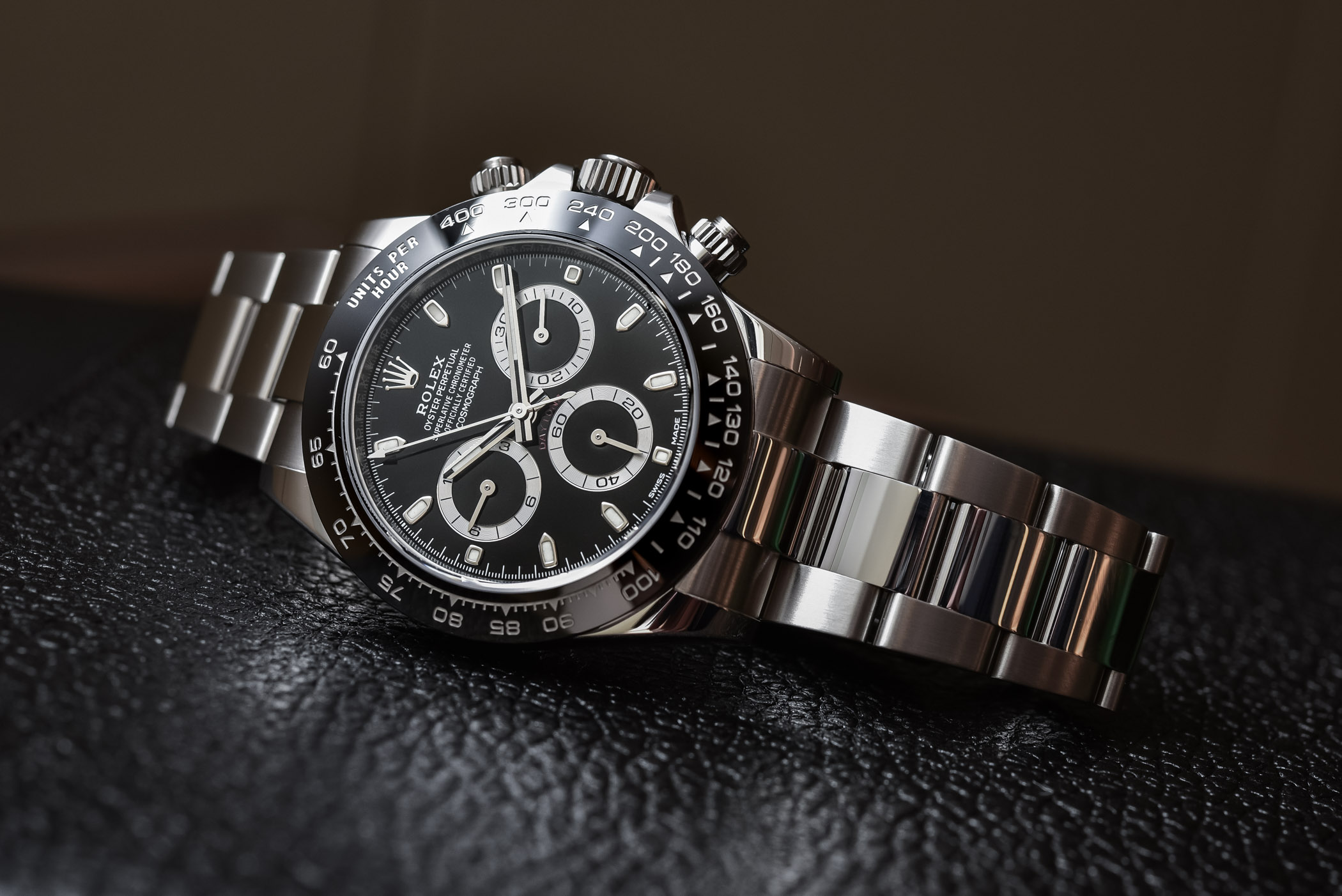

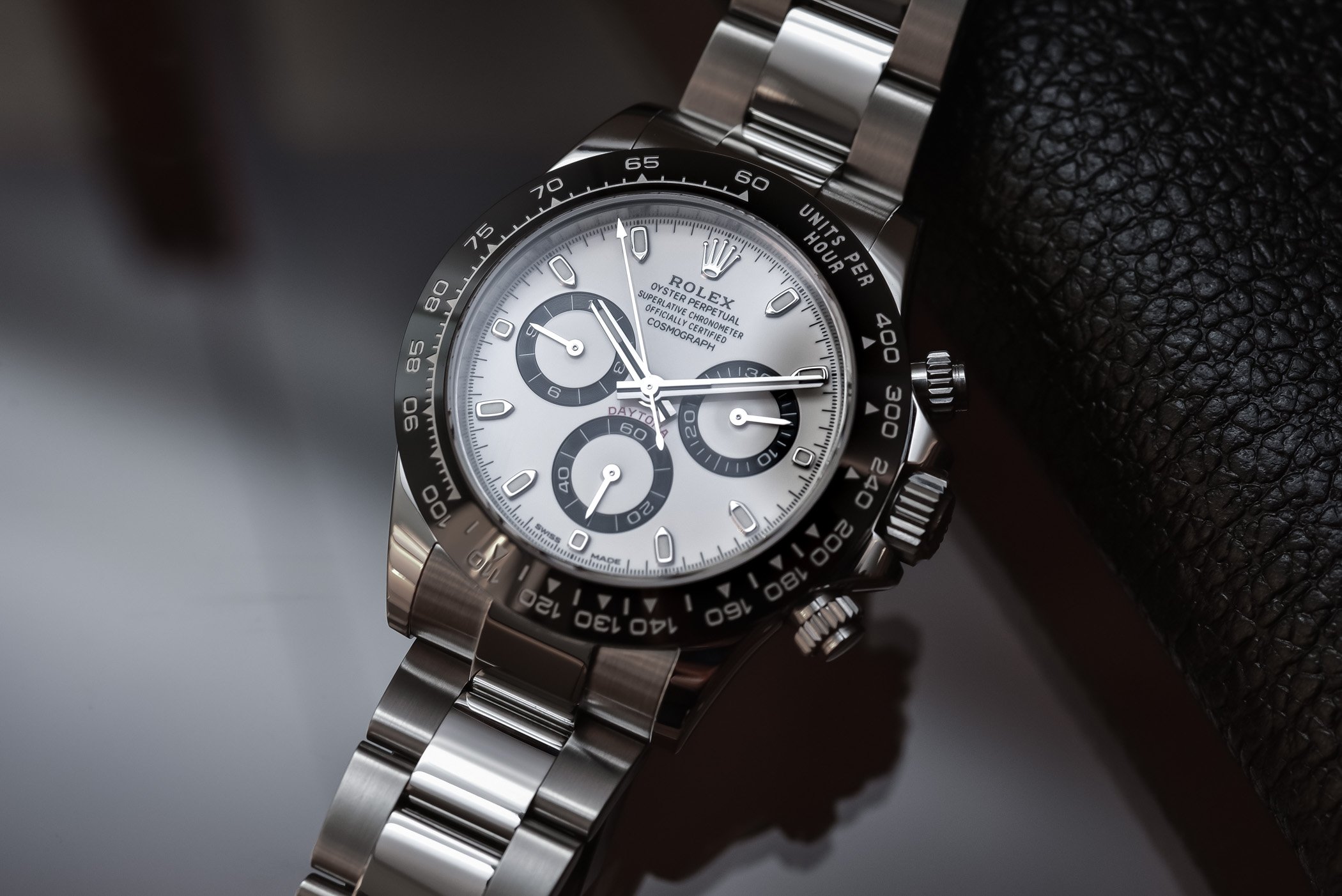

60th Anniversary, The Daytona Ref. 126500 (2023 – Current)
The latest mannequin has undergone one other important redesign, each inside and outside. This hasn’t occurred since 1988 with ref. 16520 (the Zenith Daytona) when the case was enlarged to 40mm and obtained a wholly new computerized calibre. The Rolex Daytona Ref. 126500 retains the 40mm diameter however has a extra refined case with softer strains and tapered lugs and a noticeable discount in thickness. The ceramic bezel additionally has a metallic ring across the perimeter (that’s truly a part of the case itself), calling again the look of the sooner acrylic inserts. The basic Oyster bracelet obtained a redesign with a tapered form to the outer hyperlinks to combine higher with the brand new lugs, together with improved articulation to take away visible gaps when on the wrist. The crown guard is now longer and higher built-in as effectively. The entire adjustments are comparatively delicate and received’t soar out to the layman, however they’re a giant deal to Rolex connoisseurs. Lots of the redesign has to do with the brand new calibre, which allowed for the thinner case and flatter caseback – the case is now 11.5mm in top, which is a 0.5mm discount. Refined, however tangible. And the platinum mannequin (ref. 126506) obtained a primary for any Daytona: an exhibition caseback.
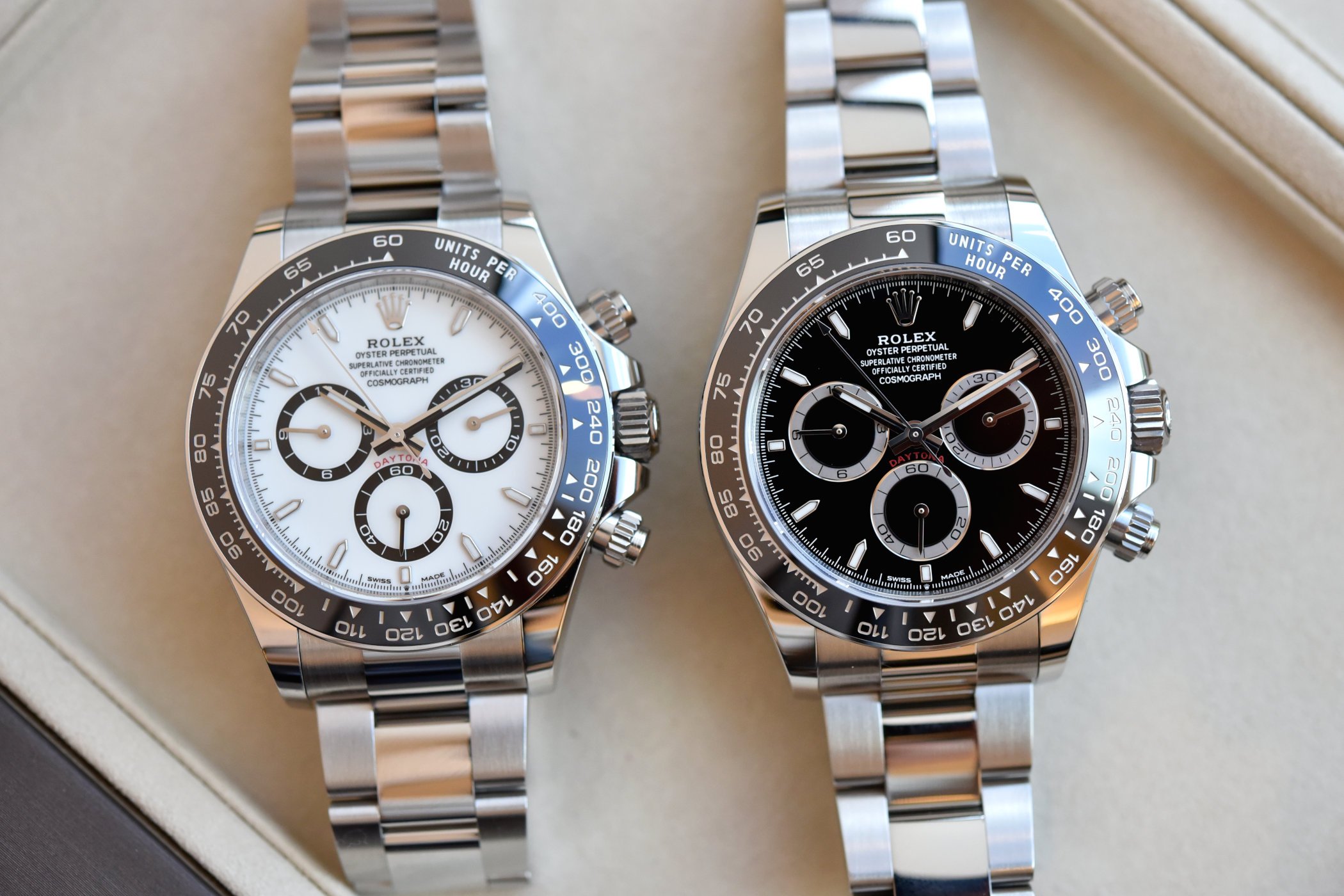

The dial has a bunch of adjustments as effectively. The sub-dial interiors are bigger, making the rings just a little thinner, whereas the 18k white gold indices are a bit smaller, and the general placement/proportions have been modified. The snailed sub-dials from ref. 116520 at the moment are vertically brushed towards a sunray-brushed fundamental dial. The hour and minute arms are a bit wider, and Tremendous-LumiNova has been changed with Rolex’s personal Chromalight. Whereas quite a bit has modified, the general Daytona vibe stays intact and the visible variations are once more delicate.


Calibre 4131
Rolex debuted its second in-house chronograph calibre with this reference that options its new, patented nickel-phosphorus Chronergy escapement working in tandem with the paramagnetic blue Parachrom hairspring. This enables for larger effectivity, accuracy and magnetic resistance, making calibre 4131 a Rolex Superlative Chronometer with an accuracy of +/-2 seconds per day (effectively inside COSC requirements of -4/+6 seconds per day). A tiny Rolex coronet beneath the 6 o’clock index confirms that the watch carries the next-generation calibre. The motion is embellished with Rolex Côtes de Genève and an openworked gold rotor for the platinum clear again. Rolex’s model of the Geneva stripes differs from the norm, with polished grooves between the bands, creating delicate but exhausting strains throughout the ornament.
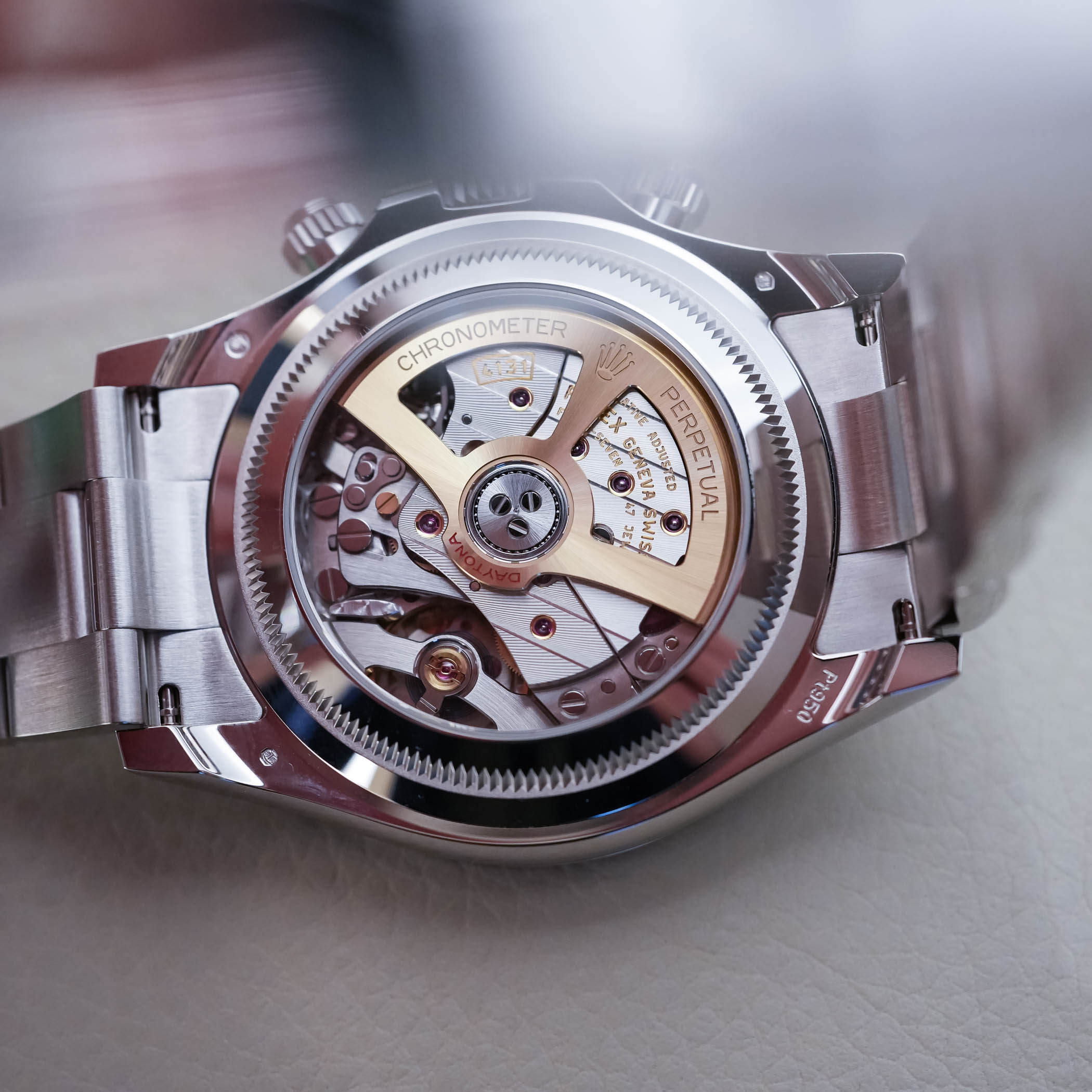

The Paul Newman Connection
On uncommon events, a watch mannequin will get intimately tied with a star, and so they’re perpetually linked. A few examples are Elizabeth Taylor and Bulgari’s Serpenti and Steve McQueen and TAG Heuer’s Monaco. With Rolex’s Daytona, that superstar is Paul Newman. Though an Oscar-winning actor, Newman was also called a racecar fanatic, successful 4 nationwide championships in Sports activities Automotive Membership of America (SCCA) races with the Bob Sharp Racing Workforce (driving Datsun/Nissan). His 1969 movie, Successful, introduced consideration to each racing (as his character Frank Capua vies to win the Indianapolis 500) and, finally, the Daytona. His co-star (and real-life spouse) Joanne Woodward had gifted him a 1968 Daytona ref. 6239 with an “unique dial” and Drive Fastidiously Me engraved on the caseback. The Daytona and significantly the restricted Artwork Deco unique dial turned synonymous with the actor as he wore it steadily, though the 2 weren’t linked by collectors till the Nineteen Eighties. After his demise, the watch offered at Phillips public sale home for a file $17.8 million in 2017.


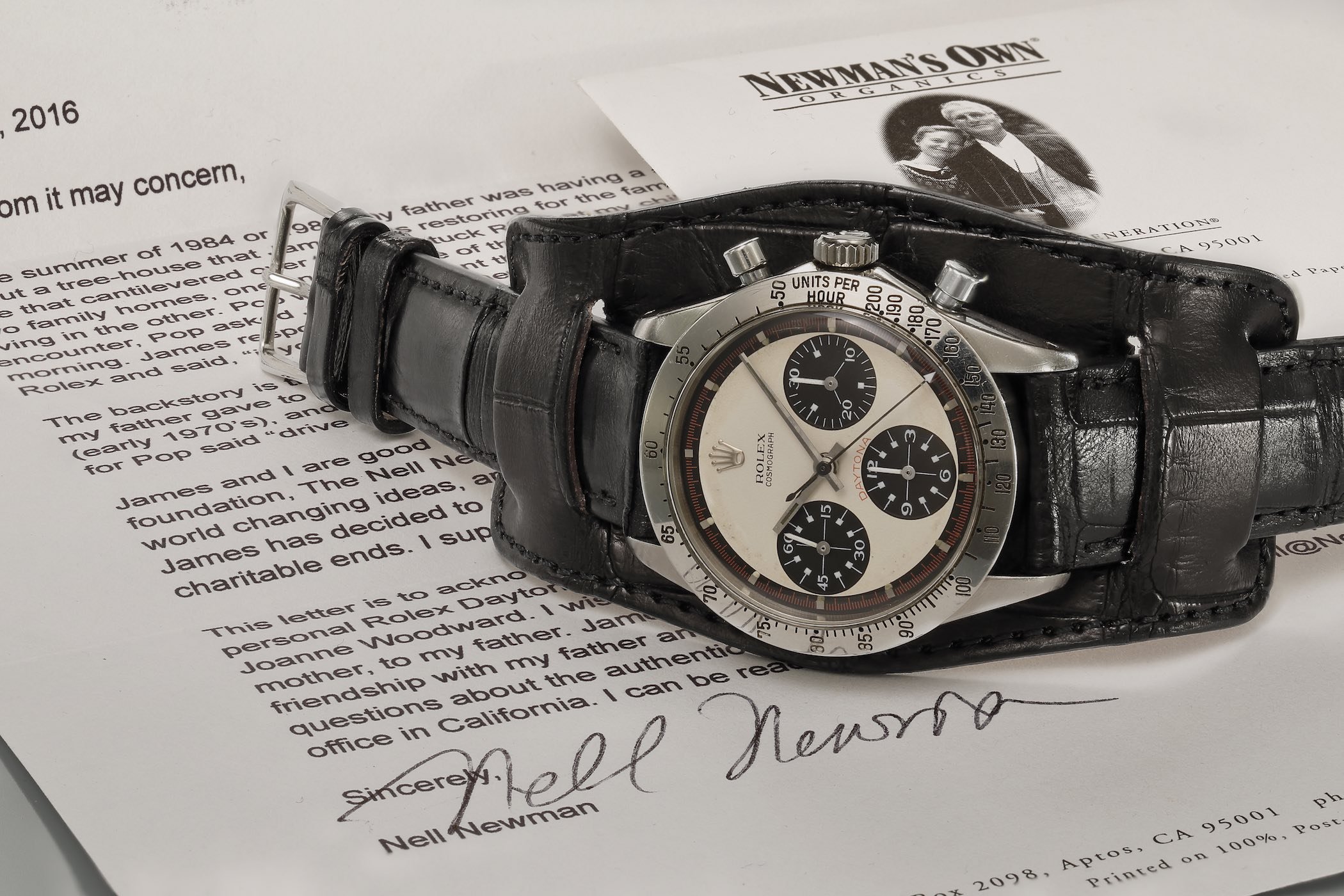

The Unique Dials, a.okay.a the Paul Newman Daytonas
The “unique” Artwork Deco dials related to Newman have been unpopular on the time and horrible sellers. A small quantity have been produced and are acknowledged primarily by the sub-dials with uncommon Artwork Deco font and tiny sq. indices. Small blocks throughout the outermost minute/chrono seconds monitor changed the standard Daytona indices and unique items got here with panda and reverse panda colors (white dial with black sub-dials or black dial with white sub-dials). The outer monitor had crimson print and was a separate color from the primary dial (matching the sub-dials), in contrast to the uniform dials on conventional fashions and have been also called three-colour dials. Newman’s well-known mannequin was ref. 6239 with a panda dial. Six Daytona references have been finally made with Paul Newman dials – 6239, 6241, 6262, 6263, 6264 and 6265 – so manufacturing ceased within the Nineteen Eighties.


Italian Collectors
Curiously, it wasn’t till the Nineteen Eighties that these turned fashionable when {a photograph} of Newman together with his Daytona was featured on the quilt of an Italian journal. That affiliation with each the Daytona and particular unique dial fueled curiosity, and its reputation steadily climbed, turning into often called the Paul Newman Daytona round 1988. Fashions got here in metal and typically gold, akin to a really uncommon ref. 6264 in yellow gold with a black or champagne dial (in panda and reverse panda kinds). Later references 6263 and 6265 in metal modified a bit in look by dropping crimson print for a two-colour dial. Sadly, Paul Newman dials are among the many most faked right this moment, so due diligence is required when contemplating a purchase order, particularly since Rolex fashions themselves are among the many most counterfeited of any premium model.
It’s exhausting to over-emphasize how unimaginable the fortunes of the Paul Newman Daytona modified over the many years, going from a gross sales flop that always sat for years on retailer cabinets to one of the fascinating classic watches right this moment. On the time, Rolex outsourced dial manufacturing to Singer, who truly made comparable “Paul Newman” dials for different manufacturers akin to Vulcain. Solely the Paul Newman Daytonas, nonetheless, reached cult standing because the others have been all however forgotten. Does any of it make sense? No, however that’s what makes the world of watch amassing so fascinating (and even infuriating), and the Rolex Daytona stands on the prime of the mountain right this moment, whether or not classic or new.
https://monochrome-watches.com/history-rolex-daytona-chronograph-1963-in-depth-review/
